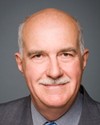Corrections would indicate that most of them have been, and I would say that in part, many of them have been. There's a deputy commissioner for women, but with none of the other recommendations that went with that position. It depends on which recommendation you're talking about.
What's important for you to know is that the 1990 report of the task force on federally sentenced women, against which each of those has been measured--it was a Conservative government that implemented that task force--promoted actually very much a decarceral model. In fact, it promoted minimum security settings across the country for women. I would suggest that was a very wise recommendation. It was derailed because of the mix of women into men's, so the minute there was an escape, women running away and being caught within ten blocks, there was a decision to put massive security around. The perception was that somehow they were going to pose a risk, which never came to pass in those cases, or in others. Nevertheless, because there have been some high-profile incidents of men escaping, that was used to justify this.
I think what Louise Arbour said was the recommendations that were made in 1990 talked about women's corrections being a flagship for corrections as a whole, being the place where you can actually make some really progressive changes that don't increase risk to public safety at all, and that hasn't been followed. I would urge you to very much look at those and examine the possibility, because with this population you could be doing that. In fact, it's a great missed opportunity to not do that.
The heads of corrections all across the country, federal, provincial, and territorial, in the mid-nineties had a strong push for a decarceration strategy, which never got implemented as well. That was supported, as I understand it, by all parties.




